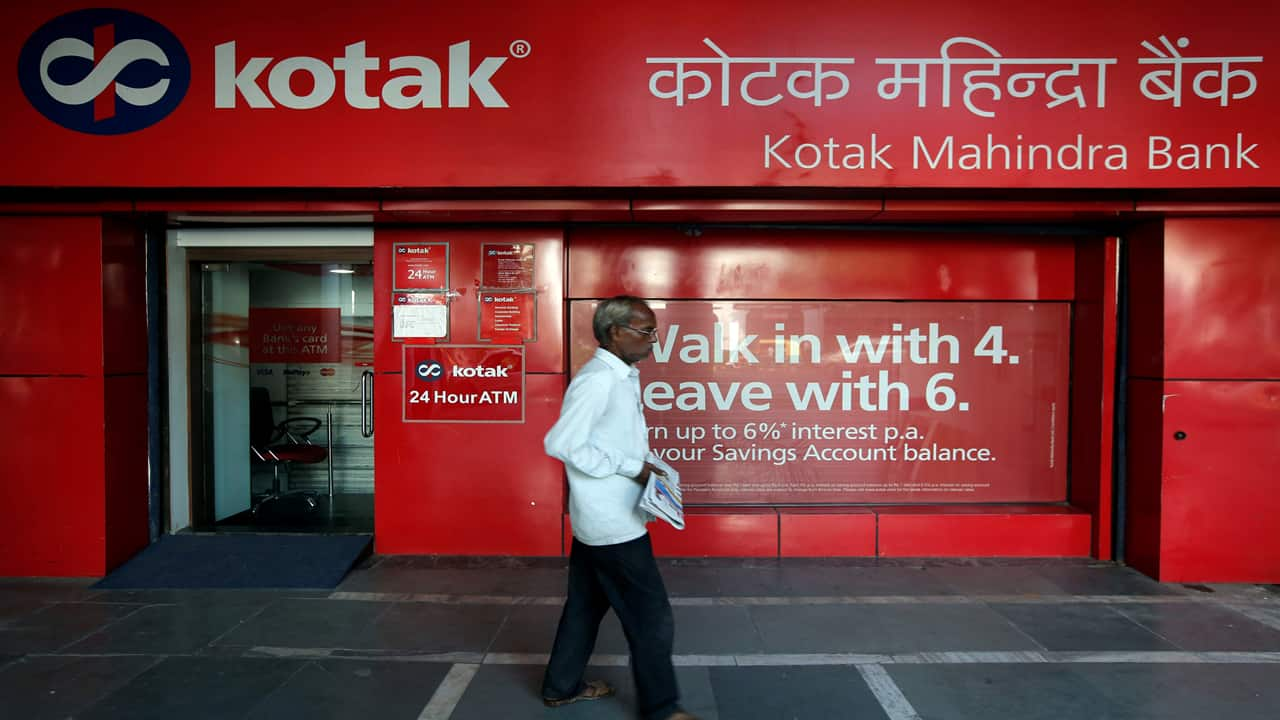Business
Kotak Mahindra Bank Cautiously Resumes Lending Amid Rising Stress

Kotak Mahindra Bank is proceeding with caution in its retail commercial vehicle (CV) and small and medium-sized enterprise (SME) lending due to increasing stress in asset quality. The bank has resumed microfinance institution (MFI) lending selectively after facing challenges in previous quarters. This information was shared by Shanti Ekambaram, Deputy Managing Director, during the bank’s earnings call for the first quarter of fiscal year 2026 (Q1 FY26).
Ekambaram highlighted the difficulties within the retail CV sector, which is significantly influenced by logistics and infrastructure. She noted, “There has been some stress on the retail CV segment and we are monitoring it very closely.” The sector is now reflecting the broader economic slowdown, leading to a spike in delinquencies for retail commercial loans. Ekambaram stated, “It’s the slowing macro now playing out in the micro,” emphasizing the need for careful management of the bank’s exposure.
On the SME front, Kotak Mahindra Bank reported growth, particularly in mid-market and reclassified corporate lending segments. Ekambaram mentioned that while SMEs remain a vital customer base, lending decisions are being approached with increased caution due to prevailing economic conditions. “Growth in the corporate book has actually been driven by SME and mid-market services,” she explained.
The bank’s microfinance portfolio, which began to show signs of stress in Q3 FY25, is now stabilizing. Ashok Vaswani, CEO of Kotak Mahindra Bank, expressed optimism during the earnings call, stating, “Q1 FY26, we believe, is the peak of the stress.” He noted that the bank has selectively resumed MFI disbursements across various states including Karnataka, Tamil Nadu, Gujarat, Bihar, and Delhi, albeit with a cautious approach.
Despite the challenges, the bank’s credit cost rose to 0.93% in Q1 FY26, driven primarily by the stress in MFI and retail CV sectors. As of the end of this quarter, gross non-performing assets (NPAs) stood at 1.48%, with net NPAs at 0.34%. Both Vaswani and Ekambaram conveyed that these risks are manageable and likely to diminish in upcoming quarters. “We think MFI delinquencies have peaked. And even with CVs, we are seeing early signs and taking proactive steps,” said Vaswani.
To ensure sustainable growth, Kotak Mahindra Bank is investing in digital platforms, including its 811 service, and has recently launched the Solitaire proposition aimed at affluent customers. Vaswani remarked, “The concept of good quality performs well for our growth portfolio.” This focus aims to support deposit mobilization and cross-sell opportunities while maintaining high-quality growth.
In its Q1 FY26 report released on July 26, 2025, Kotak Mahindra Bank reported a standalone net profit of Rs 3,282 crore, marking a 7% year-on-year decline from Rs 3,520 crore in the same quarter of the previous year. This decline follows adjustments for a one-time gain from the sale of its general insurance business. Without this adjustment, the unadjusted net profit was significantly higher at Rs 6,250 crore.
The bank attributed the profit decline to a substantial increase in provisioning and contingencies, which surged by 109% year-on-year to Rs 1,208 crore. Despite these challenges, the net interest income (NII) rose by 6% year-on-year to Rs 7,259 crore, with the net interest margin (NIM) maintaining a robust 4.65%. However, the cost-to-income ratio remained elevated at 46.19%, while the return on equity (ROE) moderated to 10.94%, down from 13.91% in the same quarter the previous year.
Overall, Kotak Mahindra Bank’s management remains committed to navigating the current economic landscape while focusing on sustainable growth and careful credit expansion.
-

 World5 months ago
World5 months agoSBI Announces QIP Floor Price at ₹811.05 Per Share
-

 Lifestyle5 months ago
Lifestyle5 months agoCept Unveils ₹3.1 Crore Urban Mobility Plan for Sustainable Growth
-

 Science4 months ago
Science4 months agoNew Blood Group Discovered in South Indian Woman at Rotary Centre
-

 World5 months ago
World5 months agoTorrential Rains Cause Flash Flooding in New York and New Jersey
-

 Top Stories5 months ago
Top Stories5 months agoKonkani Cultural Organisation to Host Pearl Jubilee in Abu Dhabi
-

 Sports4 months ago
Sports4 months agoBroad Advocates for Bowling Change Ahead of Final Test Against India
-

 Science5 months ago
Science5 months agoNothing Headphone 1 Review: A Bold Contender in Audio Design
-

 Top Stories5 months ago
Top Stories5 months agoAir India Crash Investigation Highlights Boeing Fuel Switch Concerns
-

 Business5 months ago
Business5 months agoIndian Stock Market Rebounds: Sensex and Nifty Rise After Four-Day Decline
-

 Sports4 months ago
Sports4 months agoCristian Totti Retires at 19: Pressure of Fame Takes Toll
-

 Politics5 months ago
Politics5 months agoAbandoned Doberman Finds New Home After Journey to Prague
-

 Top Stories5 months ago
Top Stories5 months agoPatna Bank Manager Abhishek Varun Found Dead in Well









